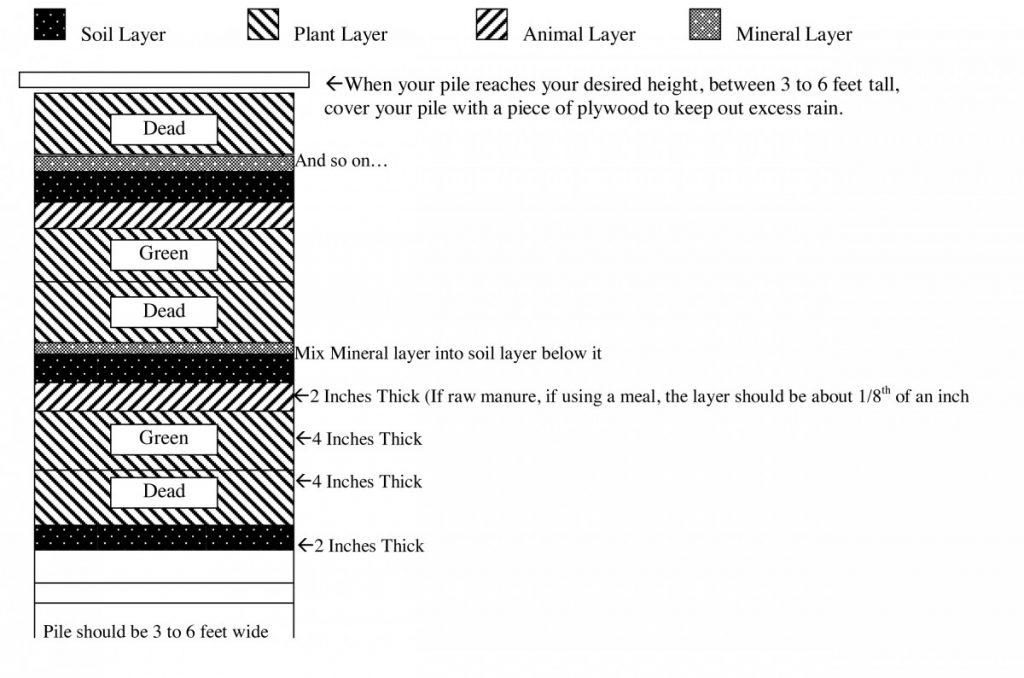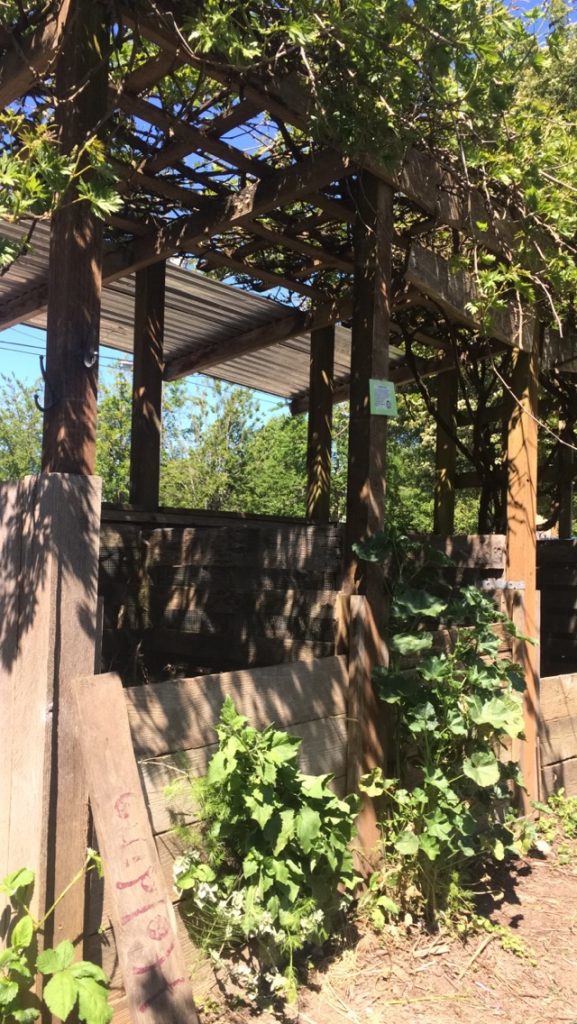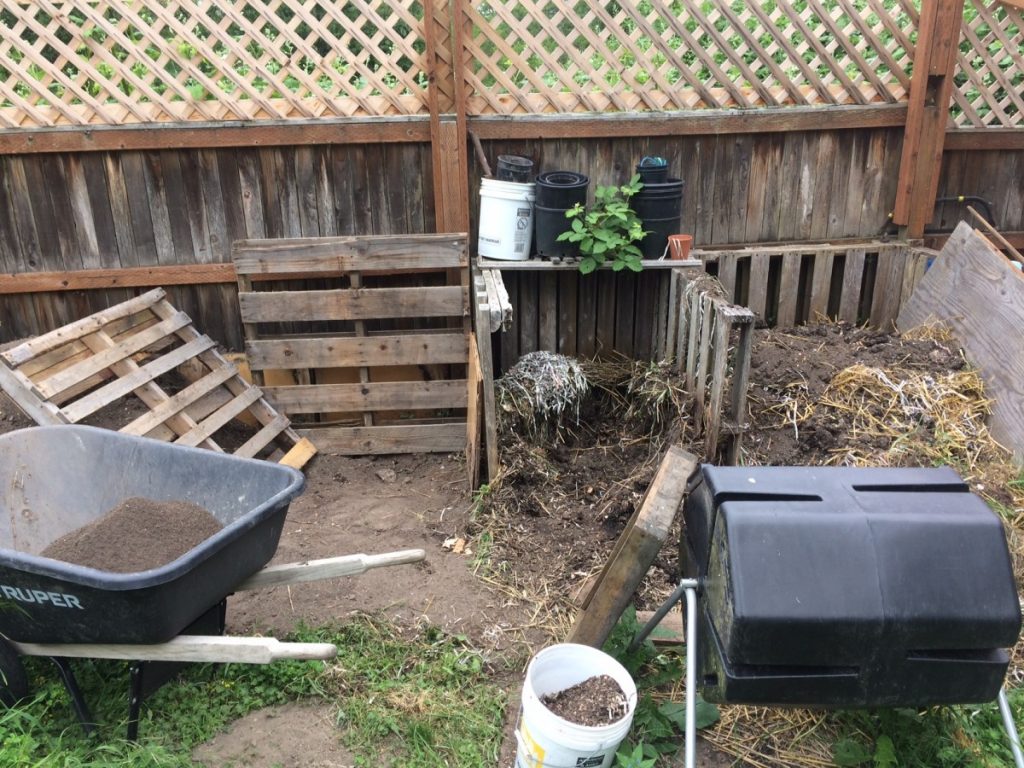I learned the SPAM method with Gail at Fertile Ground, layering Soil, Plant, Animal, and Manure to build a rich compost. This method comes from the Black Lake Organic Nursery in Olympia.
“The making of quality, humanized humus requires reaching a certain stage of decomposition through “cooking” diverse ingredients in a “biological fire.” This “fire” is generated by feverishly working and rapidly reproducing microorganisms under optimal temperature, moisture, aeration, nutrient and fuel (food) conditions. A minimal pile size (one cubic yard, or 3 ft by 3 ft by 3 ft) is needed to insulate the succession of working organisms and allow heat build-up to about 130 to 160 degrees. A temperature of 140 degrees Fahrenheit is optimal. This heat build-up cannot occur in sheet composting, low piles, or poorly constructed piles using a low diversity of materials such as leaves or all grass clippings. The best initial composition will include animal manures or animal by-products and rapid construction of a complete pile over a period of a few days or less.”
We worked together as she explained the composting system to sustain the weeding that I was doing in the sidewalk garden lots. She talked about the general principle behind the three bins, one for green, one for woody, and one for the layering. During that process she explained to me that we need more green which breaks down quicker (the nitrogen) to add to the woody brown dead stuff (carbon), to build the layers with a green and brown ratio, adding chicken manure, and then watering the compost to create a rich hummus like what you find on the forest floor.
This information was so helpful to understand the dynamics of the layers, to build heat and break down the organic matter into hummus. At Red Dog Farm the composting was on such a grand scale, it was hard to interpret how it really worked. Gail reminded me that however balanced we want the ratio of carbon and nitrogen to be, we have to go with the flow of the seasons and compost what is available. On Red Dog Farm, time spent on the clock prioritizes action and we let nature break it down for maximum production. I am applying this layering method to our small scale gardening project in Port Townsend. Improvements are needed to break down the soil faster, utilizing the black plastic compost tumbler into the rotation.
Hands on work reinforced knowledge I obtained at Fertile Ground. Gail’s instructional teaching of principles allowed me to reinforce my own understanding of the principles and create a successful, organized system of composting.




Leave a Reply